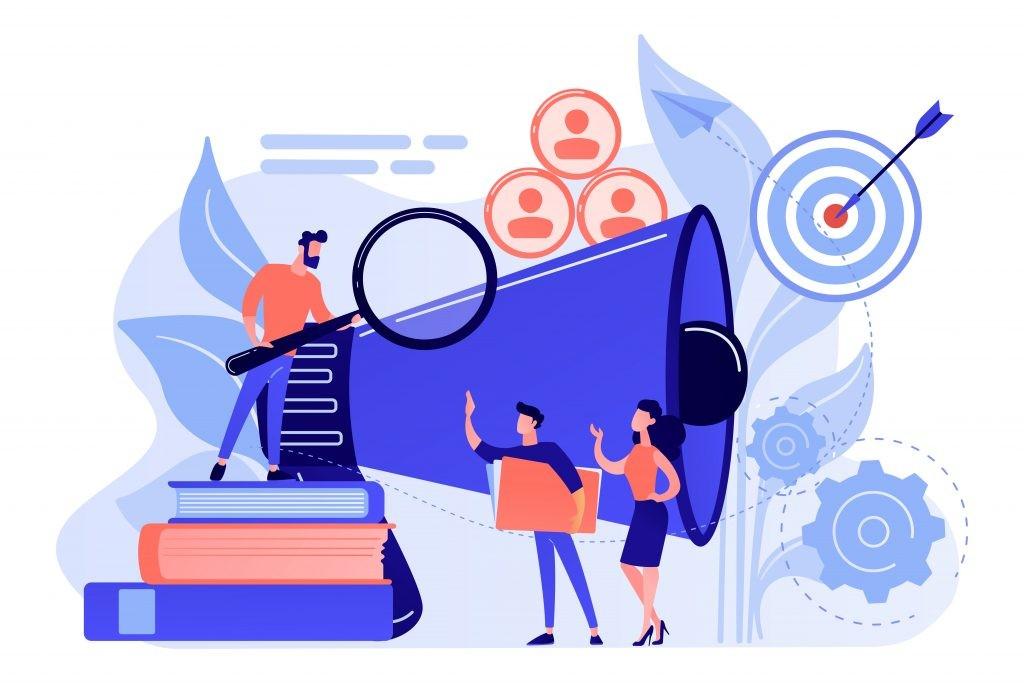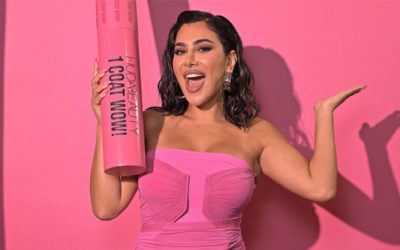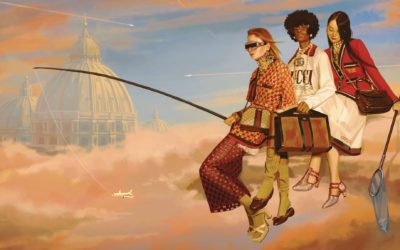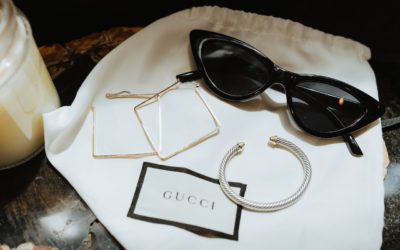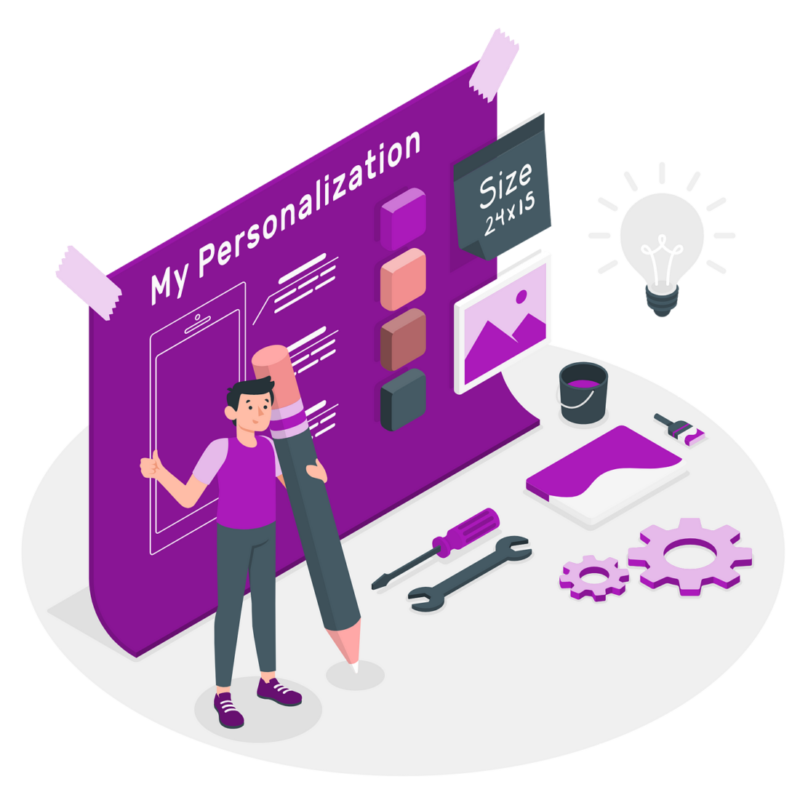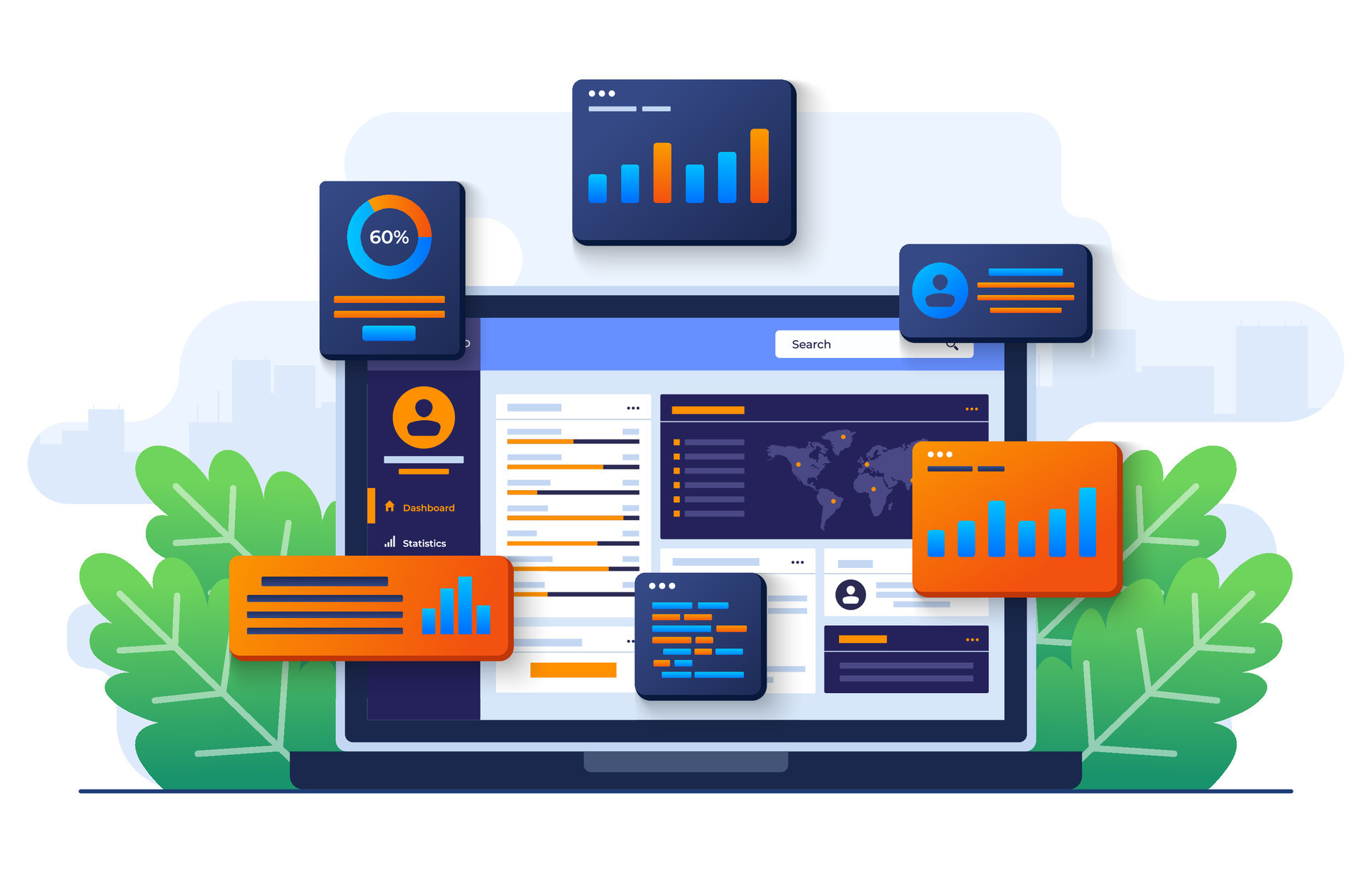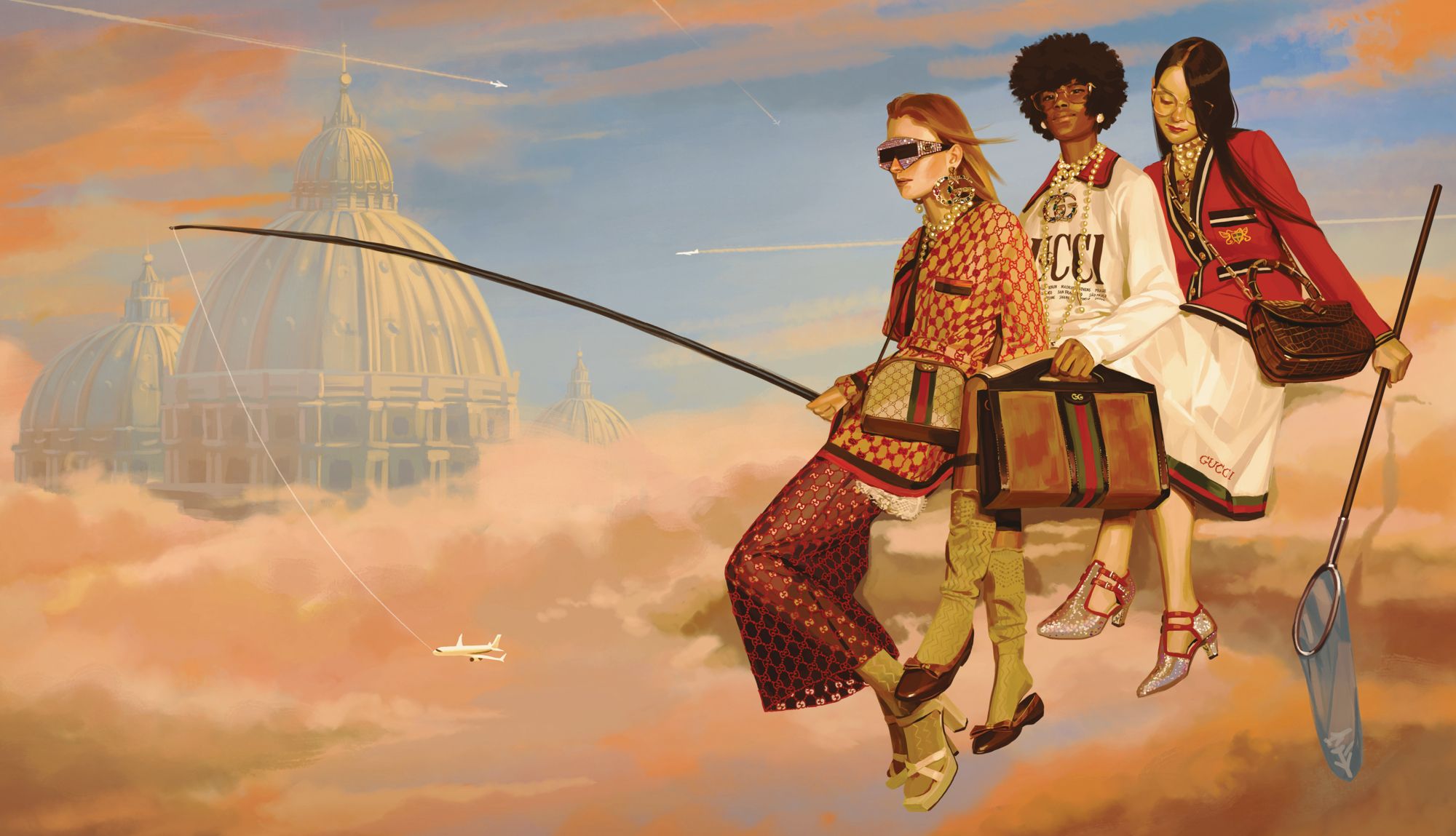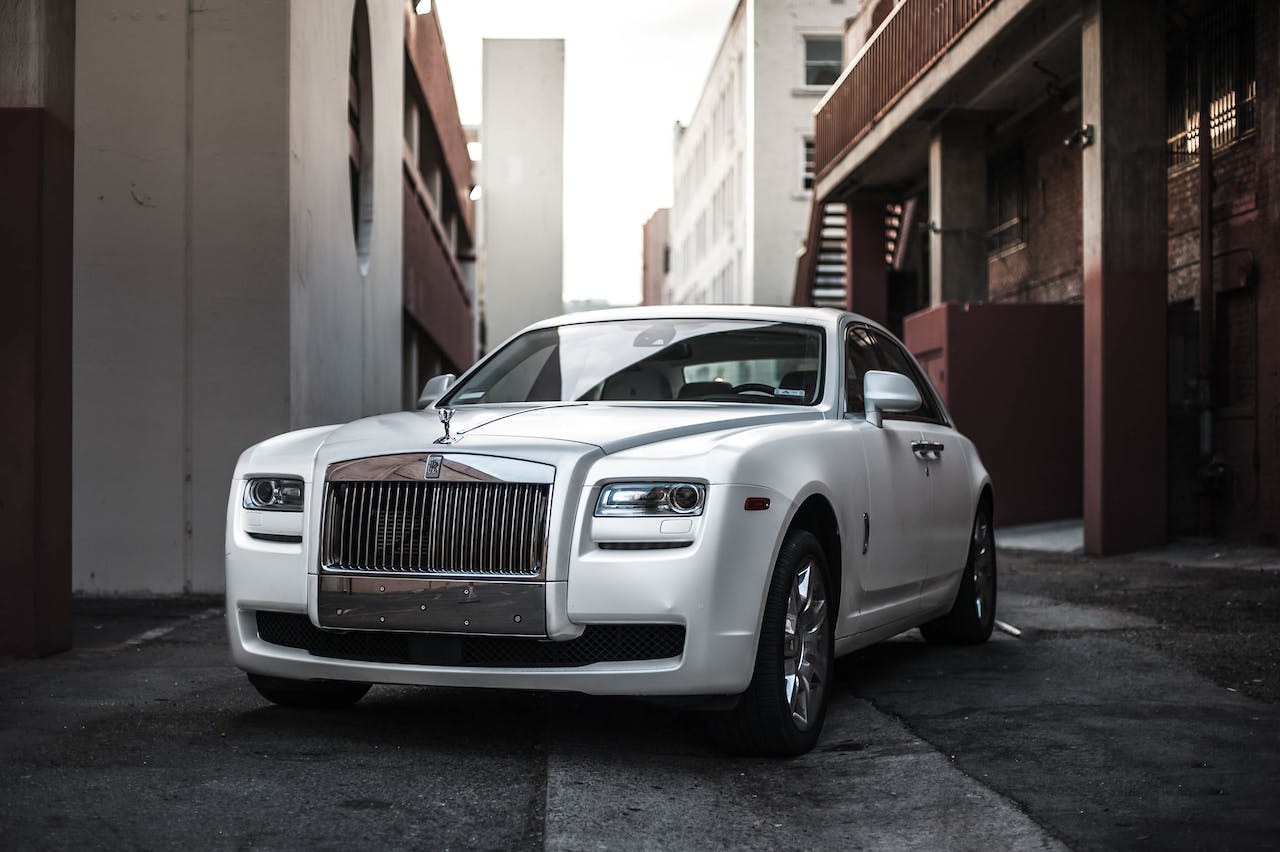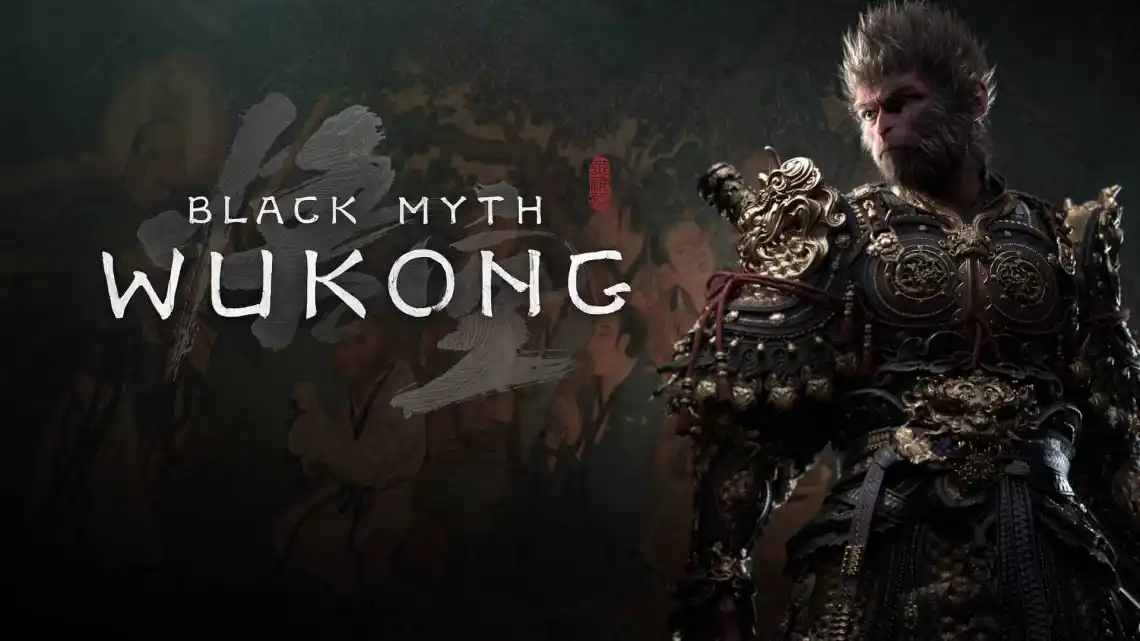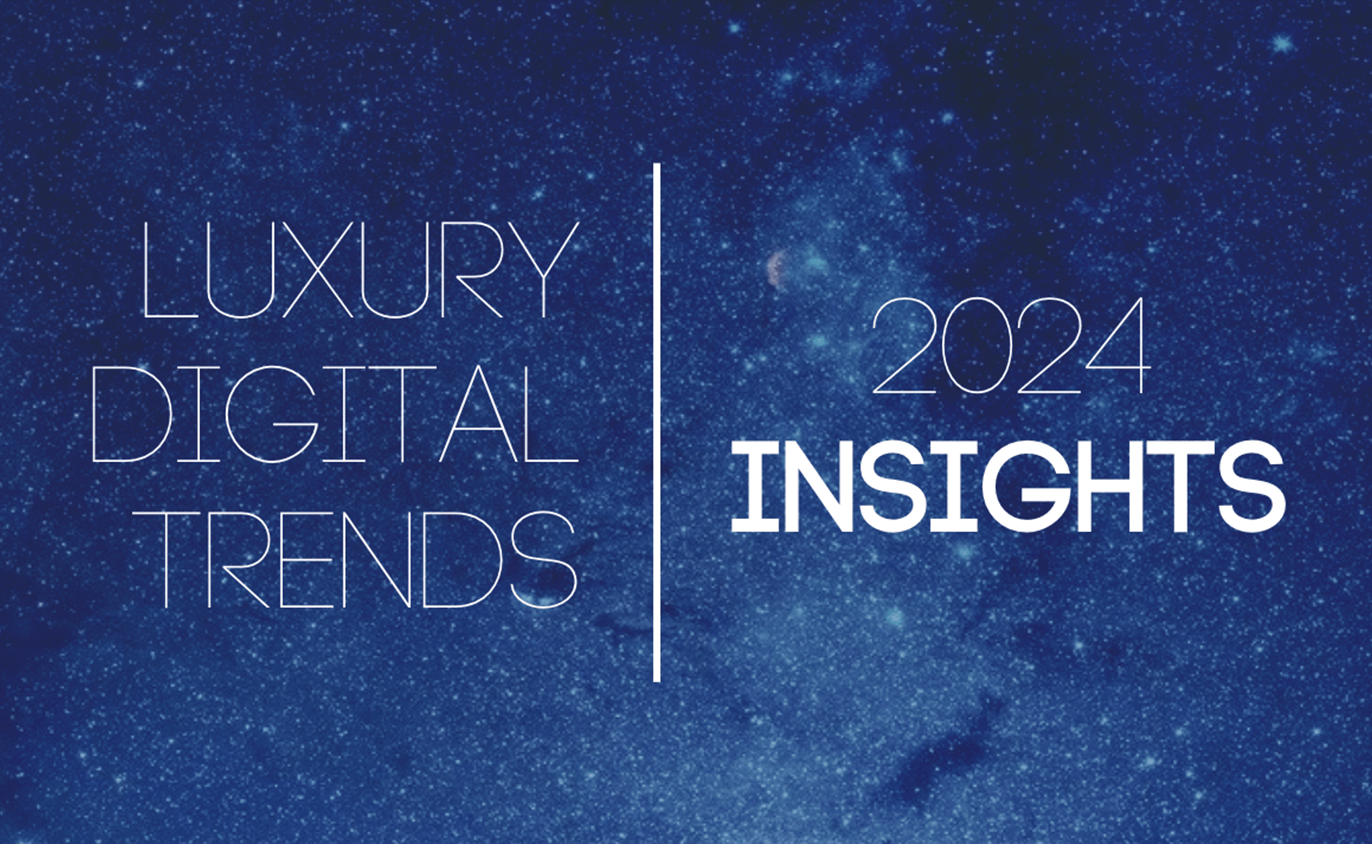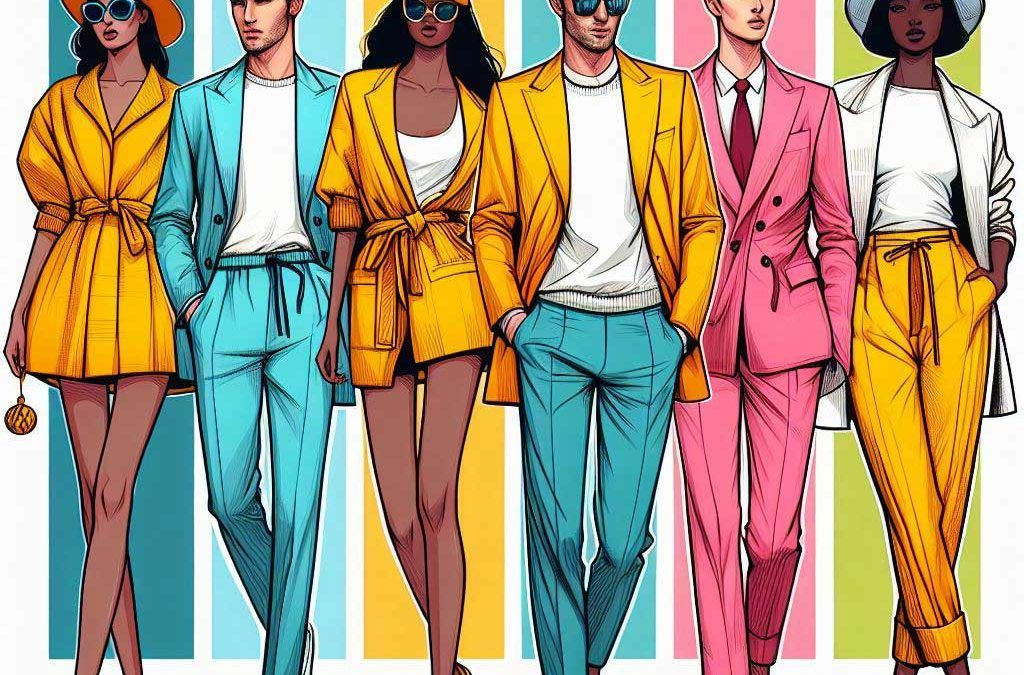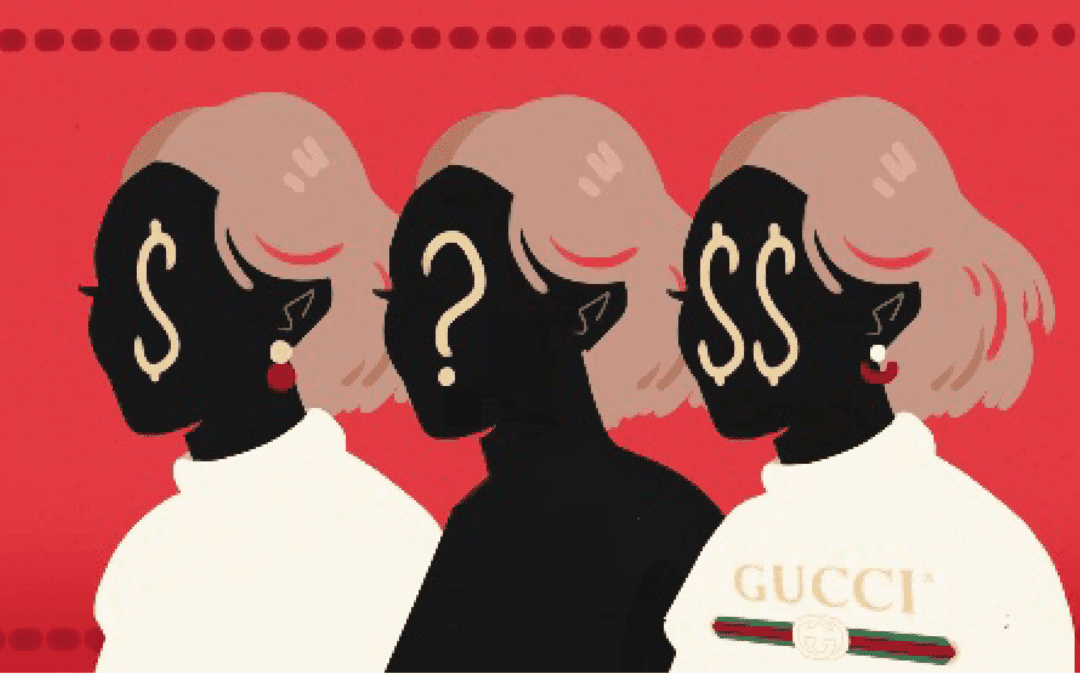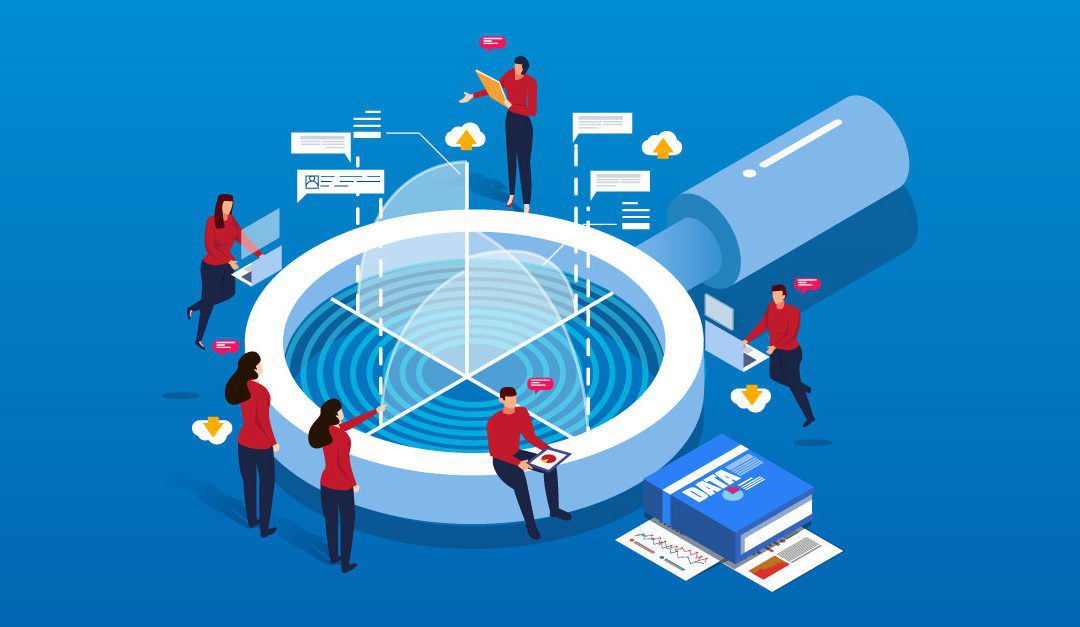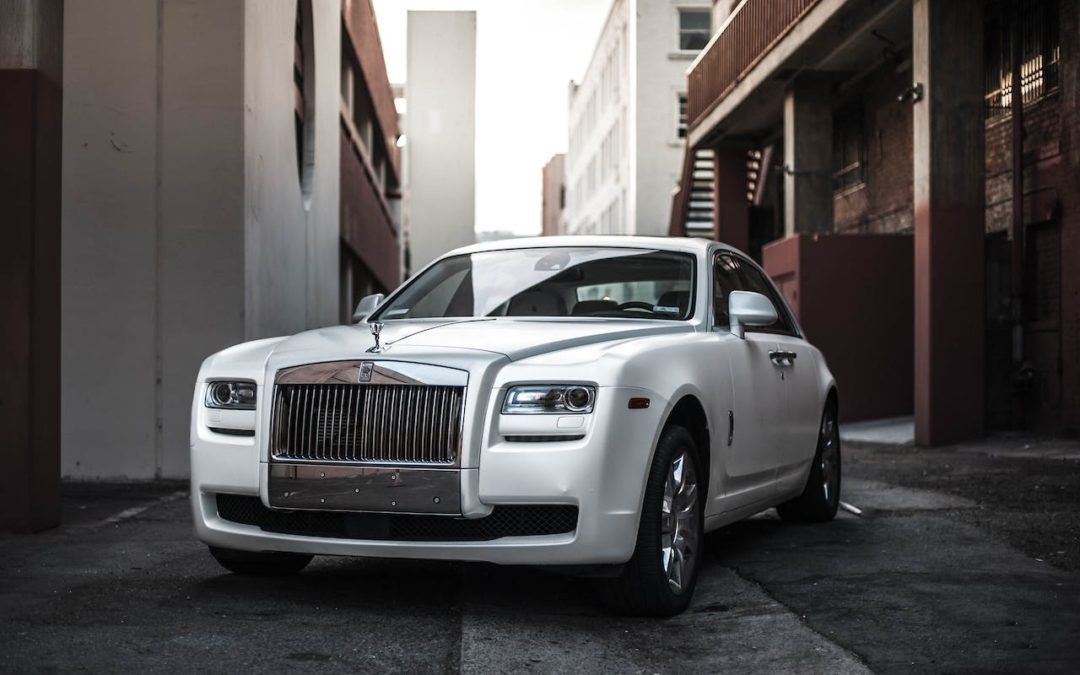11 Luxury E-Tailing Market Trends for 2024 that are Critical to your Brand
Is your luxury brand struggling to keep pace with the rapidly evolving e-commerce landscape? Are you worried about losing market share to more digitally savvy competitors? Do not worry, in this article we’ll analyze the luxury e-tailing trends and the luxury e-commerce market for this and upcoming years.
It is a critical time for luxury e-tailing market since it’ll go through unprecedented transformations. Base on our analysis there are a series of game-changing trends set to redefine the rules of engagement for high-end e-commerce.
From cutting-edge technologies and sustainability initiatives to shifts in consumer behavior that directly impacts the bottom line, this article unveils the essential strategies you need to grab these luxury e-commerce trends by the horns and win.
So read on to know what you need to stay ahead in the luxury e-tailing market and the luxury e-commerce game.
What's inside this article
Table of Contents
- Luxury E-Tailing Market Now
- Luxury e-Commerce Key Players
- Key Trends in Luxury E-tailing
- Luxury & Non-Luxury e-Commerce Examples
- Digital innovation is revolutionizing the luxury e-commerce landscape
- Emerging Technologies Shaping Luxury E-Tailing
- Sustainability and Ethical Business Models
- Omnichannel Experiences and Direct Sales
- The Shift Towards ‘Quiet Luxury’
- Changing Demographics and Consumer Behavior
- Data-Driven Strategies in Luxury E-Commerce
- Global Market Dynamics and Economic Unpredictability
- Multichannel Marketing Strategies for Luxury E-Tailers
- Enhancing User Experience in Luxury E-Commerce
- Case Studies: Successful Luxury E-Tailing Strategies
- Future Outlook and Predictions for 2024 and Beyond
- The Future of Luxury e-tailing or Luxury e-commerce trends for 2024 and beyond
- What’s next on Luxury e-commerce?
Luxury E-Tailing Market Now
The luxury e-commerce market has experienced significant growth in recent years, reshaping the way high-end brands connect with their volatile target audience. According to a report by Bain & Company, online luxury goods sales are projected to reach 30% of the global market by 2025.
This shift in consumer preferences has set the stage for the transformative trends we’re about to explore.
Market Size and Growth Projections
The luxury e-commerce market is projected to grow at a CAGR of 8.5% from 2021 to 2028, reaching a value of $114.5 billion by 2028 according to Grand View Research.
Additionally, according to Bain & Company and Vogue, the global luxury market was worth €1.5 trillion in 2023, with an 8-10% increase from 2022. While Europe and the Americas dominate, still China stands out as one of the fastest-growing luxury markets (Source: Saks).
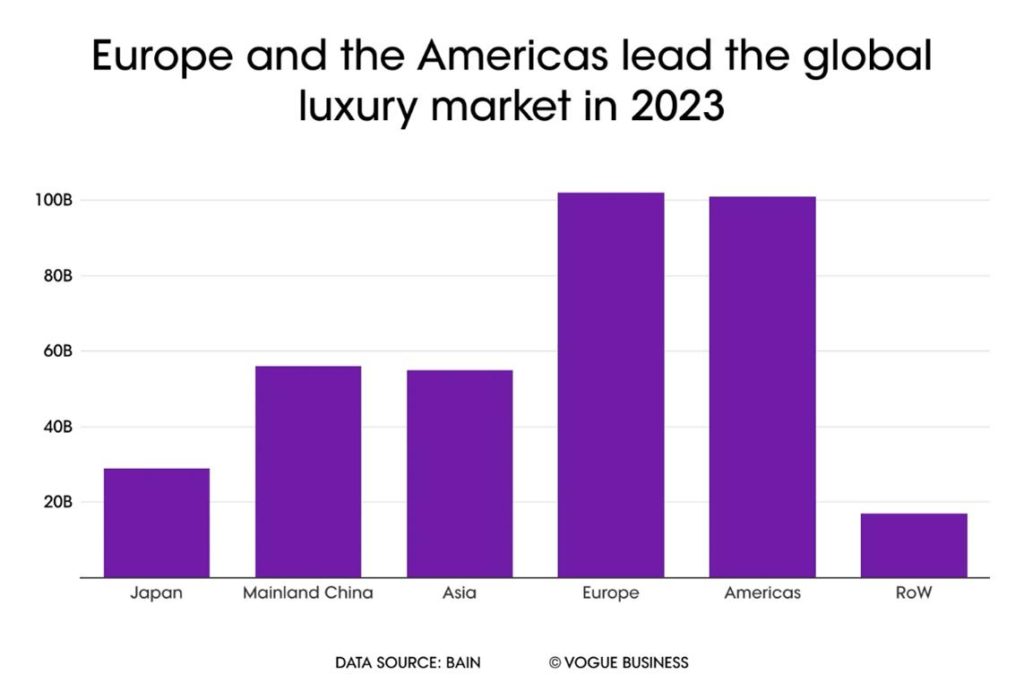
Market Size and Growth for the Luxury Market
What is driving the exponential growth of the luxury e-commerce market for 2024 and beyond?
A blend of factors is driving the growth in luxury e-commerce such as
- changing consumer behaviors and preferences,
- technological advancements, and the
- increasing comfort of luxury shoppers making high-ticket online purchases (coming from Millennials and Gen Z).
There’s a striking growth in high-end e-commerce projections, largely in the realm of luxury cars, travel, and sustainable beauty products based on this research.
Luxury e-Commerce Key Players
Key players in the luxury e-commerce space include established platforms like Net-a-Porter, Farfetch, and Mytheresa, as well as brand-owned e-commerce sites from luxury houses such as Louis Vuitton, Gucci, and Chanel.
Howerver from 2023 there have been some cracks showing and there are some winners and losers within the economic uncertainty. While LVMH (Louis Vuitton Moët Hennessy) successfully grew revenue by 9% from 2023, Kering, a French-based multinational corporation that groups brands like Gucci, Balenciaga, and Yves Saint Laurent, lost 16% according to their financial reports.
Luxury e-commerce platforms have set the standard for luxury online shopping experiences, offering curated selections, personalized services, and seamless user interfaces.
How will the value of premium e-commerce increase in 2024 and beyond?
High-end e-commerce is experiencing exponential growth in these categories:
- Luxury cars priced over $80,000 are projected to grow exponentially through 2031
- Luxury travel industry, valued at $1.2 trillion in 2021, is on track to maintain strong growth.
- Sustainable beauty products are expected to amass revenues of approximately $87 billion by 2028. (
[Sources: Global Clean Beauty Market: Analysis; Luxury Car Market trends, McKinsey & Co.]
What is the anticipated shift in luxury e-commerce consumer behavior by 2024?
Demographics in Luxury e-tailing or luxury e-commerce are constantly evolving, however, in 2023, Millennials and Gen Zers comprised a significant portion of luxury consumers, with 63% of millennials and 60% of Gen Zers investing in luxury goods. These younger audiences prioritize personalization, sustainability, and ethical values.
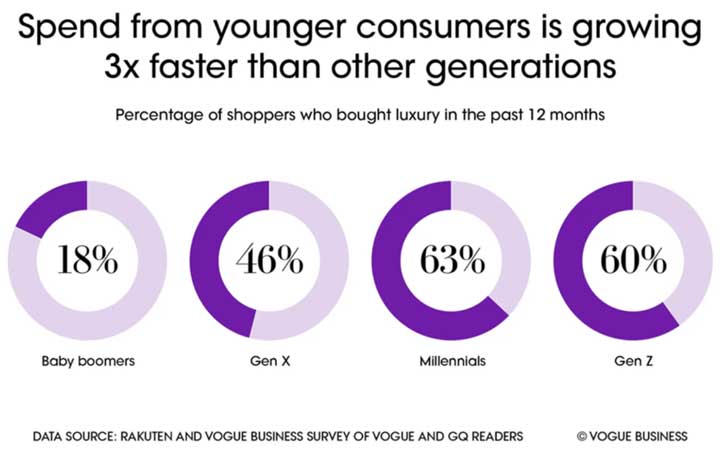
Millennials and Gen Zers comprised a significant portion of luxury consumers
63% of millennials and 60% of Gen Zers investing in luxury goods. These younger audiences prioritize personalization, sustainability, and ethical values.
Key Trends in Luxury E-tailing
1. Digital Transformation (DX)
Digital innovation is instrumental in shaping luxury e-commerce. From augmented reality (AR) to artificial intelligence (AI), technological advancements are enhancing customer experience, offering tailored interactions (luxury personalization), and driving luxury spending, particularly in the tech-savvy market of China.
Analyzing the market trends, luxury experiences will stay pivotal in driving consumers to high-end e-commerce, blending offline and online experiences.
2. Personalization & Gen AI
Artificial Intelligence (AI) and Personalization are key to luxury e-commerce and luxury e-tailing or e-commerce specialists are leveraging data analytics to understand customer behavior, personalize marketing, and improve customer service. They are also using AI to provide product recommendations tailored to each customer’s preferences and purchase history.
According to a report by Salesforce, 76% of consumers expect companies to understand their needs and expectations.
Related Article: Top 8 Personalization of Digital Marketing in Luxury Examples
Luxury & Non-Luxury e-Commerce Examples
- In 2024, Burberry introduced an AI stylist that creates personalized lookbooks for customers based on their past purchases, style preferences, and upcoming events. This feature increased average order value by 25% (Burberry Digital Innovation Report, 2024).
- Stitch Fix launched its “Fix Forecast” AI tool in 2023, predicting customers’ style needs months in advance and curating personalized collections, resulting in a 30% increase in customer retention (Stitch Fix Annual Report, 2023).
For Data-Driven Marketing Personalization Strategies check: Data-Driven Luxury: Digital Transformation 9 examples
3. Augmented Reality (AR) & Virtual Reality (VR) in Luxury Online Shopping
Augmented Reality (AR) and Virtual Reality (VR) are revolutionizing the way customers interact with luxury products online. For instance, Gucci has partnered with Snapchat to create AR try-on experiences for its shoes, while Dior has launched VR stores that allow customers to explore their boutiques from home.
Differences in Luxury Virtual Reality and Augmented Reality
Many luxury brands do not know the difference and here we show you.
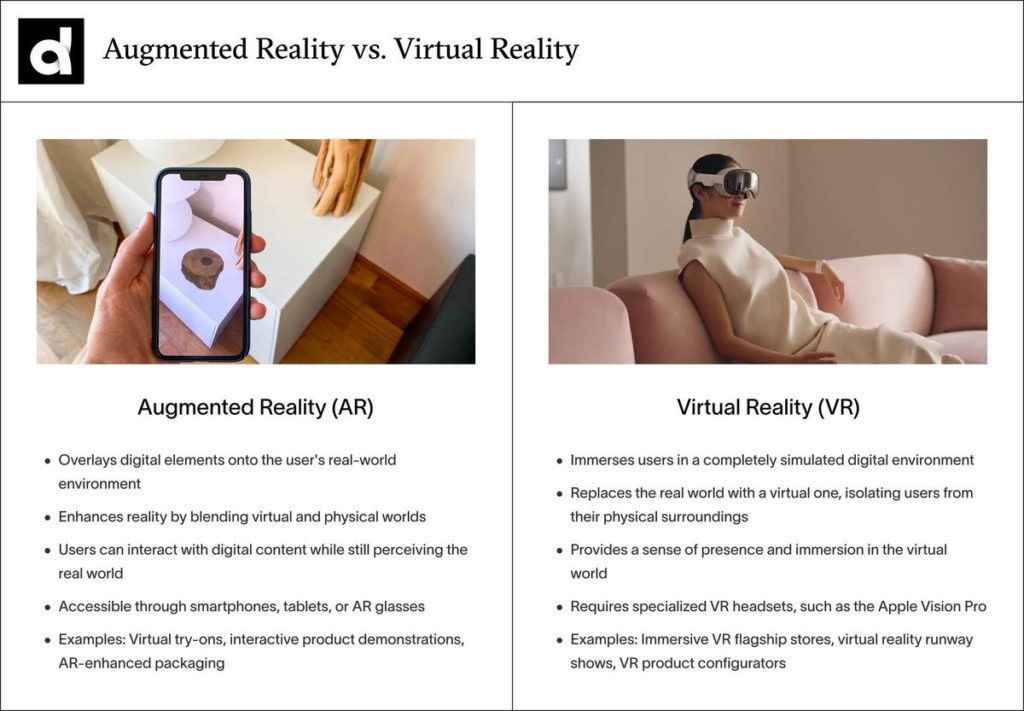
Differences between AR & VR
Non-Luxury e-Commerce Examples
- IKEA’s AR app enables users to place virtual furniture in their homes, showcasing how this technology can be applied to various retail sectors.
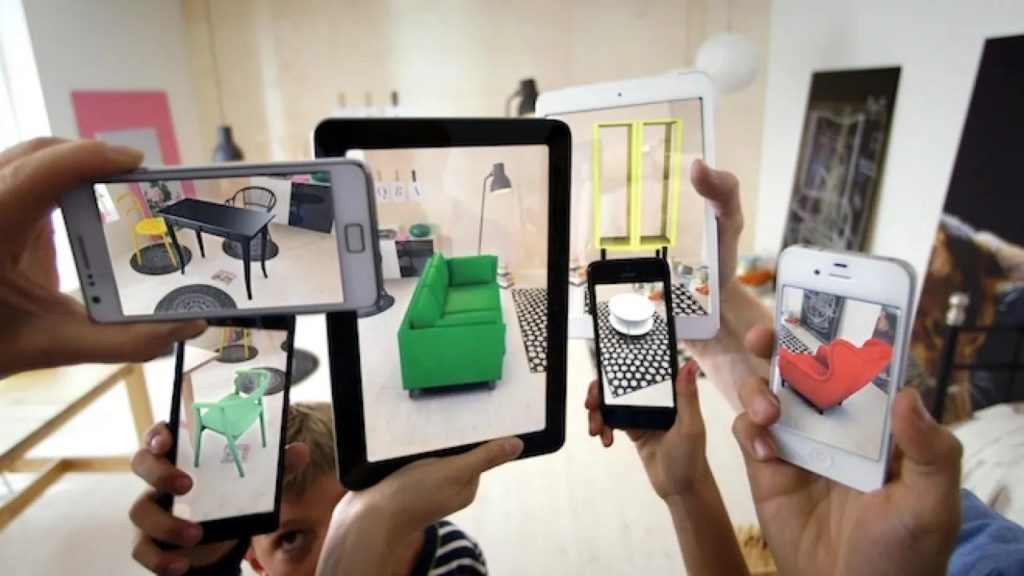
IKEA and other furniture companies, are taking AR seriously to increase purchases
4. Blockchain Technology in Ensuring Authenticity
Blockchain is emerging as a powerful tool for verifying the authenticity of luxury goods, addressing concerns about counterfeiting in the e-commerce space.
Luxury e-Commerce Examples
- LVMH, in collaboration with Microsoft and ConsenSys, has developed the AURA platform, expanded in 2023 to include all its brands, providing customers with a digital passport for every product, increasing consumer trust and reducing counterfeit sales by 40% (LVMH Blockchain Initiative Report, 2023).

This platform is used for Authentication, Supply Chain Transparency, Re-Sale, Transparency and Sustainability, even Tod’s, Cartier, Bvlgari is using the platform.
Digital innovation is revolutionizing the luxury e-commerce landscape
The blend of the real and the virtual of exclusivity (phygital or physical and digital as it’s also called), along with its wide availability, will shape the luxury e-commerce landscape having a strong impact on luxury e-shopping.
In conclusion, for our trends prediction for luxury online retailing, we must consider the factors mentioned earlier. The previous indicators point to a future where digital outlets or platforms for luxury goods will be driven by:
- Technology,
- Sustainability,
- Accessibility, and
- Global Market Dynamics.
Emerging Technologies Shaping Luxury E-Tailing
1. Live streaming for luxury products
Live streaming has gained significant traction in the luxury sector, particularly in the Chinese market.
According to McKinsey, live-commerce-initiated sales could account for 10 to 20 percent of all e-commerce by 2026. Luxury brands like Louis Vuitton and Dior have successfully leveraged live streaming to engage with customers and drive sales (in owned media or through influencers and celebrities).
Live Streaming Luxury Brand Example
- In 2023, Hermès partnered with TikTok to launch shoppable livestreams for its beauty line, resulting in a 45% increase in online sales for featured products (Hermès Digital Strategy Report, 2023).
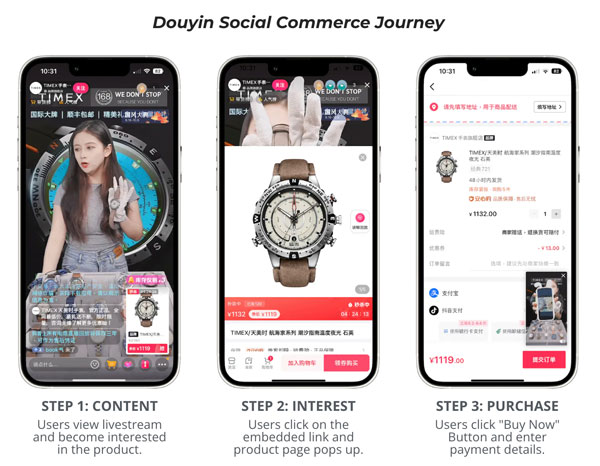
Luxury e-tailing done in China, having a lot of experience with Live commerce and social commerce in Douyin or TikTok
2. Spatial computing in luxury e-commerce
Spatial computing, which combines AR, VR, and mixed reality, is set to create immersive shopping experiences. While still in its early stages, brands like Burberry are experimenting with this technology to create virtual stores and product demonstrations.
Luxury & Non- Luxury Brand Examples
- Cartier introduced a spatial computing app in late 2023, allowing customers to virtually place and resize jewellery pieces in their environment using Apple Vision Pro, leading to a 20% increase in online engagement for high-value items (Cartier Innovation Showcase, 2024).
- Wayfair has implemented spatial computing technology to allow customers to visualize furniture in their homes using their smartphones.

Cartier, Gucci & Dior allowing customers to virtually place and resize jewellery pieces
3. 5G and its impact on Luxury e-Commerce
The rollout of 5G networks will enable faster, more seamless online experiences, potentially revolutionizing mobile luxury shopping. This could lead to more sophisticated AR and VR applications, as well as enhanced video content for luxury brands.
4. Internet of Things (IoT) in High-End Retail
IoT devices are being integrated into luxury products, offering enhanced functionality and data collection opportunities for brands.
IoT devices in luxury products are revolutionizing the shopping experience and after-sales service, offering enhanced functionality and data collection opportunities for brands. Smart tags and sensors in luxury items can:
- Track product authenticity and prevent counterfeiting
- Provide real-time inventory management for retailers
- Offer personalized recommendations based on usage patterns
- Enable predictive maintenance for high-end electronics and vehicles
- Create interactive experiences in physical stores through connected displays and mirrors
Luxury Brand Example
- Burberry has implemented RFID tags in its products to offer customers digital content and personalized recommendations when they enter stores.
- Tag Heuer‘s Connected smartwatch combines traditional luxury watchmaking with IoT technology, offering personalized fitness tracking and other smart features.

IoT Internet of Things with Tag Heuer’s Connected Watch
5. Voice Commerce in the Luxury Sector
Voice-activated shopping is becoming increasingly important to enhance customer experiences and stay competitive in the evolving e-commerce industry:
- Luxury brands are developing custom voice apps for smart speakers and smartphones
- Voice assistants can provide detailed product information and comparisons
- Brands are optimizing their content for voice search to improve discoverability
- Voice-activated ordering is being integrated into luxury car infotainment systems
- Personalized voice shopping experiences are being created using AI and customer data
Voice-activated shopping is gaining traction, with 43% of voice-enabled device owners using their devices for shopping (Voicebot.ai, 2021).
Non-Luxury Brand Example
- Johnnie Walker has developed a voice-activated whisky tasting experience for Amazon Alexa, offering personalized recommendations and cocktail recipes.
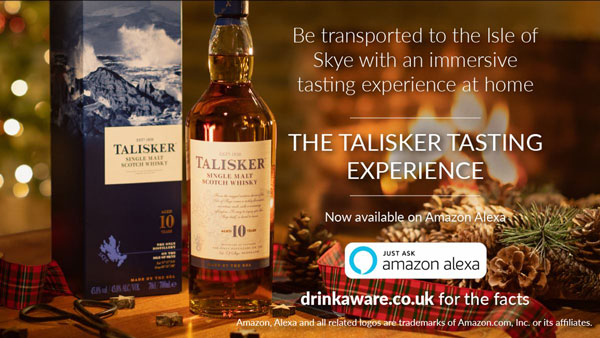
Johnny Walker Talisker experience whiskey tasting
Sustainability and Ethical Business Models
1. The Rise of Conscious Consumption
Sustainability has become a key concern for luxury consumers, becoming a key factor in luxury purchasing decisions, and there’s a growing demand for sustainability and ethical practices in luxury retail.
It is confirmed by several studies saying that 85% more likely to buy from a brand after a positive brand event or experience (Edelman Trust Barometer, 2021).
Additionally, according to a report by Bain & Company, 80% of luxury consumers prefer brands that are socially responsible. Luxury brands are responding to this trend, offering products made from sustainable materials or contributing to social causes are enjoying a competitive edge. They also incorporate sustainable practices into their operations and supply chains.
Luxury & Non-Luxury e-Commerce Examples
- In 2024, Chanel launched its “Circular Chanel” initiative, offering a buy-back program for classic handbags and introducing a line of products made from recycled materials, resulting in a 15% increase in brand loyalty among millennial consumers (Chanel Sustainability Report, 2024).
- Allbirds expanded its “Rerun” program globally in 2023, reselling gently used shoes and introducing a shoe recycling program, leading to a 25% increase in repeat customers (Allbirds Impact Report, 2023).
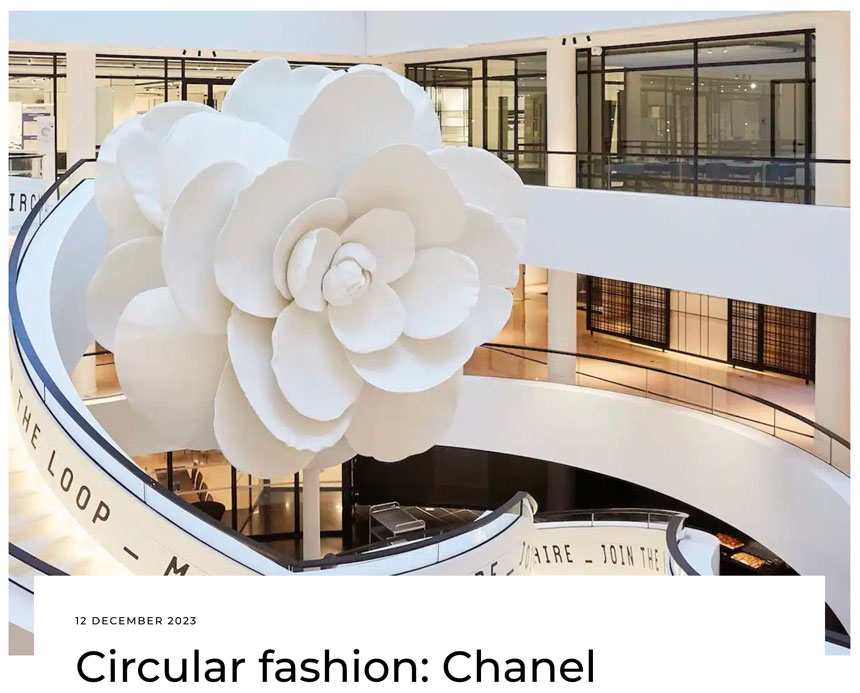
Chanel circular fashion
2. Sustainable Practices in Luxury E-Tailing
Luxury brands are increasingly incorporating sustainable practices into their operations, from sourcing to packaging and delivery.
Luxury & Non-Luxury e-Commerce Examples
- Stella McCartney has long been a pioneer in sustainable luxury fashion, using innovative materials and transparent supply chains.
- Patagonia’s Worn Wear program promotes circular fashion by reselling used clothing, demonstrating how sustainability can be integrated into business models.
3. Transparency and Ethical Sourcing
Consumers are increasingly demanding greater transparency in the luxury supply chain. According to a 2023 report by Nielsen, 73% of millennials are willing to pay more for sustainable goods. This shift is driving luxury brands to adopt more ethical sourcing practices and provide greater transparency about their production processes.
4. Second-Hand Luxury Market and Circular Economy
The second-hand luxury market is projected to grow to $64 billion by 2025 (Boston Consulting Group, 2021), driven by sustainability concerns and changing consumer attitudes.
Some representatives of this growth are platforms like The RealReal and Vestiaire Collective. This trend aligns with the circular economy concept and appeals to environmentally conscious consumers.
Luxury Brand Example
- Richemont acquired second-hand watch platform Watchfinder & Co., embracing the circular economy trend.
5. Corporate Social Responsibility (CSR) Initiatives in Luxury E-Commerce
CSR initiatives are becoming increasingly important for luxury brands to maintain consumer trust and loyalty.
Luxury Brand Examples
- Tiffany & Co.’s have implemented rigorous ethical sourcing practices for their diamonds and precious metals, setting new standards for the industry.
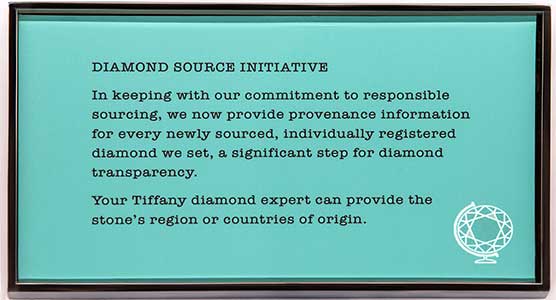
Tiffany’ & Co.’s diamond ethical sourcing certification is included in any diamond you buy
Omnichannel Experiences and Direct Sales
1. Integrating Physical and Digital Retail
The luxury sector is embracing omnichannel strategies to provide seamless experiences across all touchpoints, meaning creating experiences that blend physical and digital retail.
According to a 2023 report by McKinsey & Company, “The State of Fashion,” 76% of luxury shoppers expect a consistent experience across all channels.
Luxury brands are focusing on . Burberry’s social retail store in Shenzhen, China, is a prime example, integrating social media, gaming, and in-store experiences.
Luxury & Non-Luxury e-Commerce Examples
- In 2023, Chanel launched its “Chanel Connect” program, integrating its boutiques with digital platforms to offer personalized services and virtual appointments.
- Louis Vuitton‘s 2023 “LV Connected” app integrates in-store and online experiences, offering virtual try-ons, personalized product recommendations, and exclusive in-app purchases. This resulted in a 40% increase in omnichannel sales (LVMH Digital Innovation Report, 2023).
- Warby Parker‘s AI-powered virtual try-on feature, launched in late 2023, allows customers to accurately visualize glasses on their faces, leading to a 35% reduction in return rates (Warby Parker Q4 2023 Earnings Call).
2. The Role of Mobile Apps in Luxury E-Commerce
Mobile apps are playing a vital role in the evolution of luxury e-tailing market and luxury e-commerce market trends of 2024. According to Statista, mobile e-commerce sales are projected to reach $710 billion in the US by 2025.
Luxury Brand Examples
- In 2024, Louis Vuitton is set to launch an AI-powered mobile app that offers virtual try-ons, personalized recommendations, and exclusive in-app experiences.
- Cartier has developed sophisticated apps that offer virtual try-ons, personalized recommendations, and exclusive content to enhance the mobile shopping experience.

Mobile Trends Technology for VR and AR
Insight: Mobile apps revolutionize luxury e-commerce
Mobile apps will play a vital role in the evolution of luxury e-tailing market trends of 2024. Going mobile-first presents numerous benefits such as immediate access, personalized offerings, and improved customer service channels. Brands can leverage apps to deliver immersive retail experiences, boost customer loyalty, and engage in effective, data-driven marketing.
3. Strategies for Direct Sales: Direct-to-consumer (DTC)
Direct-to-consumer (DTC) sales are becoming increasingly important for luxury brands to maintain control over the customer experience and data.
By selling directly through their own websites and apps, brands like Gucci and Louis Vuitton can maintain control over the customer experience and gather valuable data.
Luxury Brand Examples
- Burberry reported in its 2023 annual report that 80% of its sales now come through direct channels, including its website and mobile app.
3. Building and Maintaining Clientele Relationships
Personalized experiences and relationship-building are key to success in luxury e-commerce.
Non-Luxury Brand Examples
- Stitch Fix uses AI to offer personalized styling services, demonstrating how technology can enhance customer relationships across different market segments.
The Shift Towards ‘Quiet Luxury’
1. Moving Away from Overt Branding
The trend towards understated luxury or ‘quiet luxury’ continues to grow, moving away from overt branding towards more subtle, high-quality products.
Brands like Bottega Veneta and The Row have successfully capitalized on this trend, focusing on craftsmanship and timeless design rather than logos. According to a 2023 report by Bain & Company, “Luxury Goods Worldwide Market Study,” 65% of luxury consumers prefer subtle branding over loud logos.
Luxury Brand Example
- Bottega Veneta‘s “no logo” approach, introduced in 2023, exemplifies this trend, with products identifiable by their craftsmanship rather than visible branding.
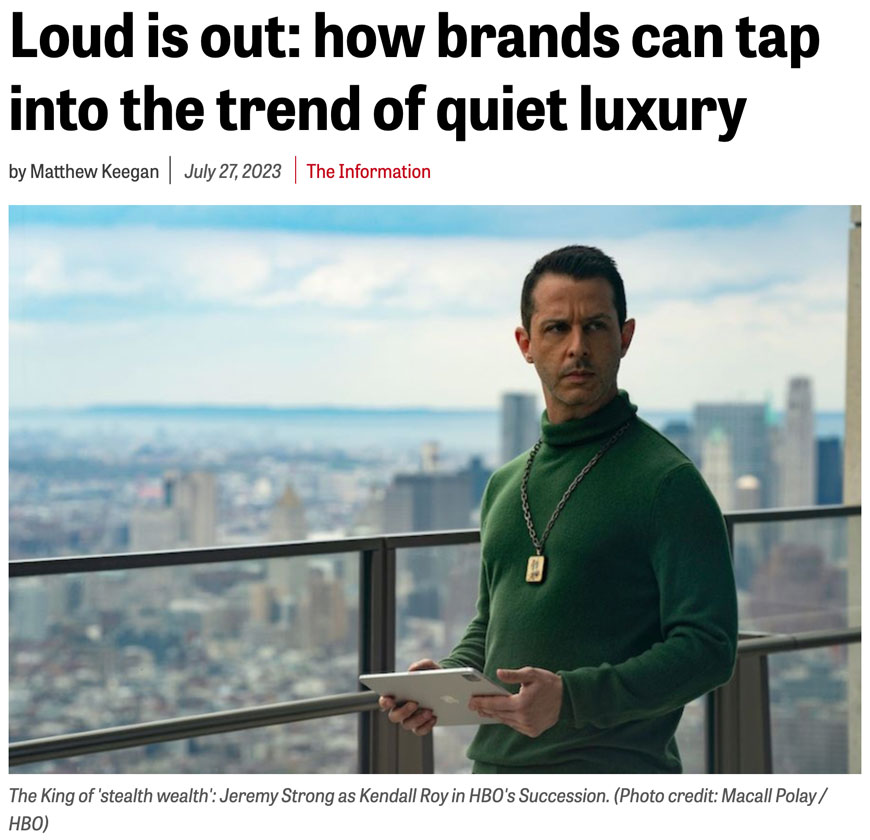
Stealth Wealth or Quiet Luxury represented in the HBO series ‘Succession’
2. Customization and Exclusivity in the Digital Space
Customization and exclusivity in the digital space are becoming key differentiators for luxury brands. Luxury brands are leveraging technology to offer personalized and exclusive products online.
Luxury Brand Examples
- In 2024, Gucci launched a digital atelier where customers can design bespoke items using AI and AR technologies.
- Also, Gucci’s DIY service allows customers to personalize select products online, creating a unique shopping experience.
3. Focus on Quality and Timeless Appeal
Luxury consumers are increasingly valuing quality and longevity over trendy items. Customers are searching more keywords like “investment pieces in luxury fashion”
Non-Luxury Brand Example
- Everlane’s “Radical Transparency” approach, focusing on high-quality, ethically-produced basics, aligns with this trend.
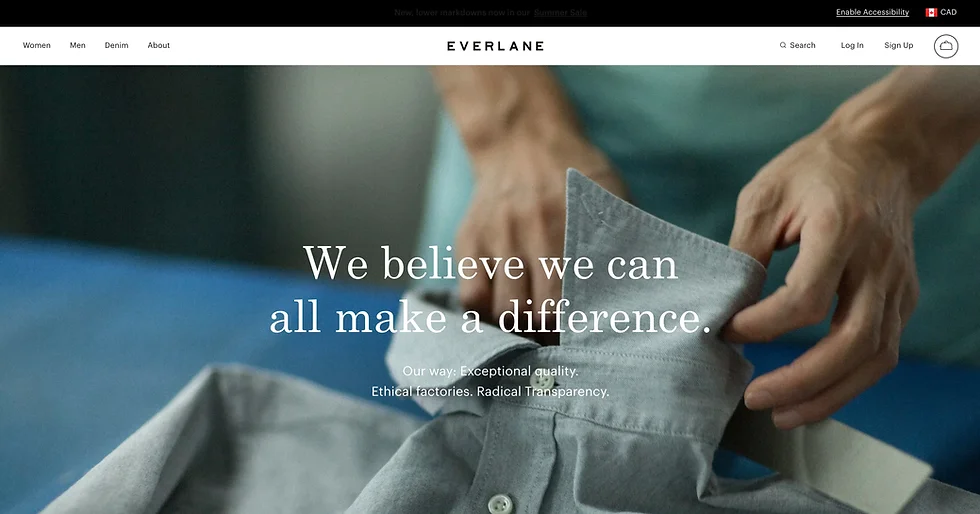
Everlane Quality and “Radical Transparency” as one of the purposes and differentiators of the brand
Changing Demographics and Consumer Behavior
Millennials and Gen Z as the New Luxury Consumers
Millennials and Gen Z are becoming the primary consumers of luxury goods, with different expectations and values compared to previous generations. According to a report by Deloitte, “Global Powers of Luxury Goods,” by 2025, young luxury consumers are expected to account for 70% of the luxury market… So, we’d better incorporate into our strategies the young luxury consumers.
Luxury Brand Example
- Tiffany & Co.’s 2023 “Not Your Mother’s Tiffany” campaign specifically targeted younger consumers, showcasing how traditional luxury brands are adapting to new demographics.
In this video, Tiffany evokes appeals to a young audience in a very rough cut video
The Impact of Social Media on Luxury E-Tailing
Based on social media luxury shopping trends for 2024, Social media continues to play a crucial role in luxury marketing and sales. Platforms like Instagram and TikTok are becoming important channels for brand discovery and engagement. Luxury brands like Chanel and Dior have successfully leveraged these platforms to reach younger audiences.
Instagram Shopping is projected to generate $10 billion in revenue for Meta in 2024, according to eMarketer.
Non-Luxury Brand Example
- Glossier, while not a luxury brand, has successfully leveraged social media to create a cult following, demonstrating strategies that luxury brands can adapt.

Glossier is using ‘Quiet Luxury’ and mixing some other styles for their campaigns
Shifting Preferences in Luxury Experiences
There’s a shift in preferences towards luxury experiences rather than just products, which is also called ‘Experiential luxury’. This trend is reflected in the growth of the luxury travel market, which was valued at $1.2 trillion in 2021 according to Allied Market Research.
Luxury Brand Example
In 2024, Rimowa plans to launch “Rimowa Experiences,” offering exclusive travel packages to customers who purchase their luxury luggage.
Data-Driven Strategies in Luxury E-Commerce
1. Leveraging Big Data for Personalized Experiences
Big data analytics is enabling luxury brands to offer hyper-personalized experiences which is the base for data-driven luxury retail strategies.
According to a 2023 Gartner report, “Predicts 2024: The Future of Retail,” 60% of luxury retailers are using AI for personalization and will use it for 2025 onwards.
Luxury Brand Examples
- Farfetch‘s “Store of the Future” concept, set to expand in 2024, uses data from online and offline interactions to create personalized in-store experiences.
- LVMH has partnered with Google Cloud to develop new cloud-based AI solutions to enhance customer experiences.
2. Predictive Analytics in Inventory Management
Predictive analytics is helping luxury brands optimize inventory and reduce waste, another strategy known as AI-powered luxury inventory management which is all the rage in 2024 and will be from now on.
Non-Luxury Brand Example
- Zara‘s parent company, Inditex, uses AI to predict demand and manage inventory across its brands, a strategy that luxury brands are increasingly adopting. This is also used by Shein and Temu.
3. Customer Segmentation and Targeted Marketing
Advanced data analytics is enabling more precise customer segmentation and targeted marketing efforts. This is a strategy for Hyper-personalization marketing campaigns and product recommendations.
Luxury Brand Example
- In 2023, Dior launched an AI-powered marketing platform that creates personalized campaigns based on individual customer data and preferences.
Related article: Data-Driven Luxury Digital Strategy: Can Personalization Solve Brand Problems?
Global Market Dynamics and Economic Unpredictability
The Rise of China and Japan in Luxury E-Commerce
China continues to be a dominant force in the luxury e-commerce market. According to a 2023 report by Bain & Company specialized in the Chinese luxury e-commerce market, Chinese consumers are expected to account for 40% of global luxury spending by 2025.
The luxury e-commerce growth in China is driven by a combination of existing wealth, digital-first preferences, and a strong appetite for luxury goods but the quality and quantity are also being deeply analyzed, especially by the young consumers.
Luxury Brand Example
- In 2024, Hermès plans to launch a China-exclusive digital platform featuring limited-edition products and virtual fashion shows, catering to the unique preferences of Chinese consumers.
Japan, another key player in the luxury market, is also experiencing significant growth in e-commerce. According to a 2023 report by McKinsey & Company, Japan’s luxury e-commerce market is projected to grow by 10% annually, driven by a tech-savvy population and a strong preference for high-quality, premium products.
Luxury Brand Example
- In 2023, Louis Vuitton launched a Japan-exclusive online store, offering personalized shopping experiences and limited-edition items tailored to Japanese consumers’ tastes.
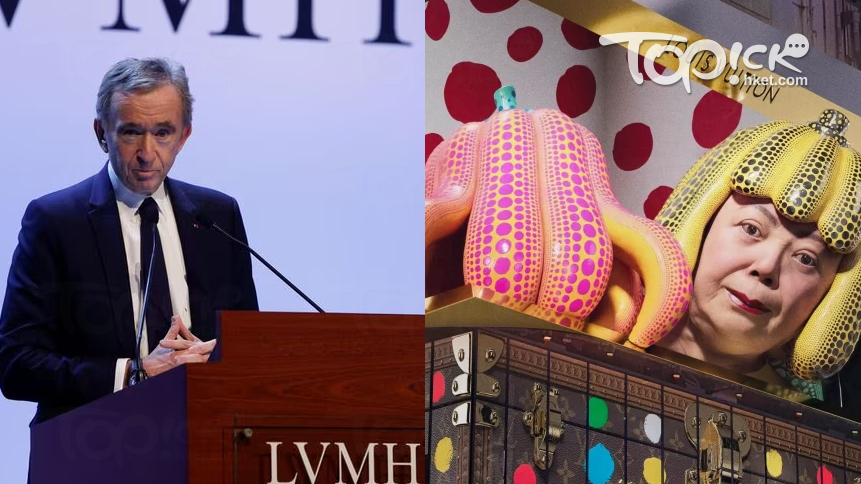
LVMH growth in Japan with collaborations in 2023 with Yayoi Kusama
Emerging Markets and Their Impact on Luxury E-Tailing
Analyzing the luxury e-commerce growth in emerging markets, these are playing an increasingly important role in the luxury e-commerce sector.
Non-Luxury Brand Example
- Jumia, often called the “Amazon of Africa,” has seen significant growth in luxury goods sales, demonstrating the potential of emerging markets for luxury e-commerce.
Cross-Border E-Commerce Challenges and Opportunities
Cross-border e-commerce presents both challenges and opportunities for luxury brands. According to a 2023 report by McKinsey, cross-border e-commerce is expected to account for 22% of global e-commerce by 2025.
Luxury Brand Example
- LVMH’s 24S platform has implemented AI-powered customs and duties calculation to simplify cross-border purchases for luxury consumers.
Analyzing Global Economic Conditions’ Impact on Luxury Spending
Economic uncertainties continue to influence luxury spending patterns. The luxury market has shown resilience, with Bain & Company projecting a 3-5% growth in 2024 despite economic challenges.
Strategies for Resilience in Uncertain Economic Climates
Some luxury brand strategies for economic uncertainty can be implemented to maintain growth in uncertain economic conditions.
Luxury Brand Example
- Kering Group has diversified its portfolio and invested in digital capabilities to mitigate risks associated with economic volatility.
Multichannel Marketing Strategies for Luxury E-Tailers
Leveraging Social Media Platforms
Social media channels continue to be a critical channel for luxury brands and they are incorporated into every social media luxury marketing strategy in the ecommerce area. According to Statista, social commerce sales are expected to reach $2.9 trillion by 2026.
Luxury Brand Example
- Chanel‘s 2024 TikTok strategy includes collaborations with Gen Z influencers to create exclusive, platform-specific content.

Chanel TikTok Japanese influencers to amplify the brand reach
Influencer Collaborations and Their Impact on Brand Awareness
Luxury brand influencer collaborations and Influencer marketing remain powerful tools for luxury brands. A 2023 report by Influencer Marketing Hub suggests that the influencer marketing industry will be worth $21.1 billion by 2024.
Non-Luxury Brand Example
Beauty brand Glossier‘s success with micro-influencers demonstrates strategies that luxury brands can adapt for authentic engagement.

Glossier Micro influencers
Content Marketing Strategies for Luxury Brands
Content marketing is evolving to meet the needs of luxury consumers seeking authenticity and storytelling.
Luxury Brand Example
- Cartier‘s 2024 content strategy includes a series of short films showcasing the craftsmanship behind their iconic pieces, blending entertainment with brand education.

Email Marketing and Personalized Communications
Email marketing remains a valuable tool for luxury brands when executed with sophistication and personalization.
Non-Luxury Brand Example
Stitch Fix‘s highly personalized emails, driven by AI algorithms, showcase how luxury brands can use data to create tailored communications.

Stitchfix used Generative AI to create personalized emails and messages [Source: Forbes]
Enhancing User Experience in Luxury E-Commerce
Optimizing Website Design and Navigation
Luxury website user experience(UX) is paramount in luxury e-commerce. According to a 2023 Adobe report, 38% of people will stop engaging with a website if the content or layout is unattractive.
Luxury Brand Example
- Gucci’s 2024 website redesign incorporates AI-powered personalization and intuitive navigation to create a seamless browsing experience.
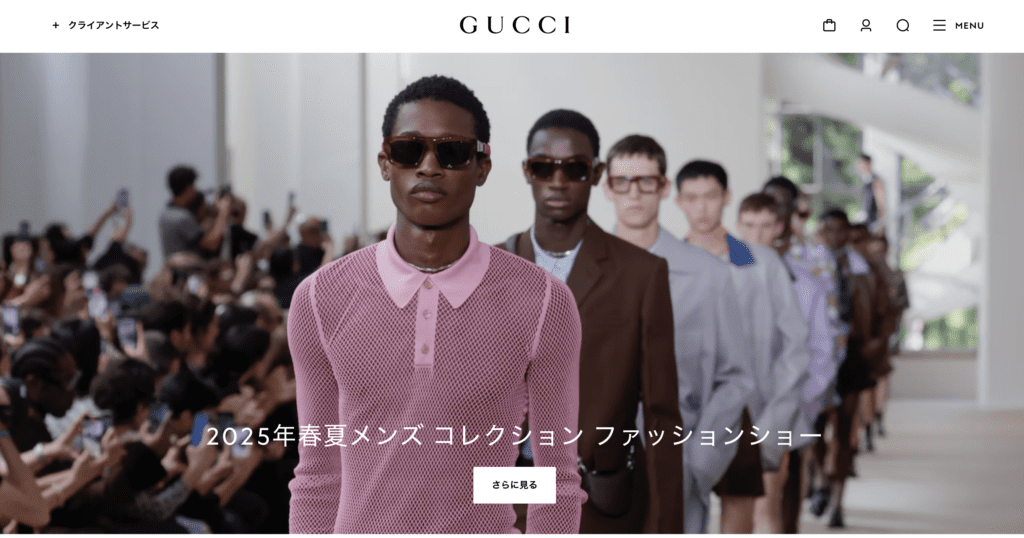
Gucci redesigned Homepage
Mobile Responsiveness and App Development
With mobile commerce sales expected to reach $710 billion in the US by 2025 (Statista), luxury mobile shopping experience optimization is crucial.
Non-Luxury Brand Example
- The Nike app‘s success in creating a personalized, seamless mobile shopping experience offers lessons for luxury brands.

Nike’s Personalization in Mobile App
Implementing AR and VR for Immersive Shopping Experiences
AR and VR technologies are revolutionizing the online luxury shopping experience. According to a 2023 Gartner report, 70% of luxury retailers will use AR or VR technologies by 2025.
Luxury Brand Example
- In 2024, Rolex plans to launch a VR experience allowing customers to virtually try on watches and explore their intricate mechanisms in detail.
Personalization Techniques for Luxury E-Commerce Platforms
AI-driven personalization is becoming increasingly sophisticated in the luxury sector.
Non-Luxury Brand Example
- Amazon‘s personalization algorithms, which drive 35% of its revenue, demonstrate the potential of AI in creating tailored shopping experiences.
Case Studies: Successful Luxury E-Tailing Strategies
Analyzing successful luxury e-tailing strategies provides valuable insights for brands looking to excel in the digital space. Let’s examine some notable case studies from 2023 and 2024.
Luxury Brand Digital Transformation
Gucci’s Digital Transformation
Gucci In 2023, Gucci’s digital transformation initiative, “Gucci 9,” integrated AI-powered customer service with their e-commerce platform, resulting in a 30% increase in online sales conversion rates.
This case demonstrates how luxury brands can leverage technology to enhance customer experience and drive sales. The long-tail keyword “AI-powered luxury customer service” is relevant here.
Omnichannel Approach in Luxury Retail
Warby Parker
In 2023, the company introduced its “Virtual Vision Test” app, allowing customers to renew prescriptions from home. Also, this year, it aims to integrate AR technology into its app, enabling customers to virtually try on glasses with unprecedented realism.
It is expected that by 2024, Warby Parker’s omnichannel strategy, blending online sales with strategically located physical stores, will lead to a 25% increase in customer lifetime value.
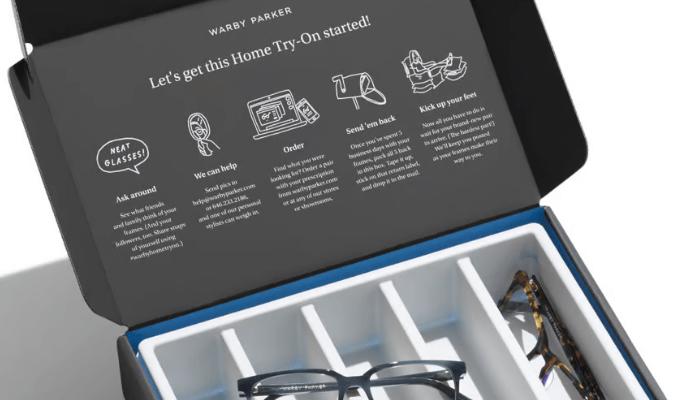
While not a luxury brand, Warby Parker’s approach offers valuable lessons for luxury retailers in creating seamless integrated retail experiences and omnichannel retail innovation.
Innovative Live Streaming Campaigns in Luxury Retail
Louis Vuitton & Gucci
In 2024, Louis Vuitton’s series of exclusive live streaming events on Chinese platform Little Red Book, the Amazon of Chin, resulted in a 40% increase in engagement among Gen Z consumers.
Additionally, in Douyin or the Chinese TikTok’s, has a livestreaming service that utilizes the app’s interest-based e-commerce model to create a seamless journey from sparking initial interest to completing a purchase. Luxury brands like Louis Vuitton and Gucci have found great success using this social commerce platform.
![Luxury e-tailing e-commerce - Little Red Book live-streaming platform [Credit: Daily Urban Dose]](https://alcelabs.com/wp-content/uploads/2024/06/Little-Red-Book-Louis-Vuitton.jpg)
Little Red Book live-streaming platform [Credit: Daily Urban Dose]
These cases highlight the growing importance of luxury brand live streaming strategy in luxury e-commerce, especially in the Chinese market.
Future Outlook and Predictions for 2024 and Beyond
Anticipated Trends in Luxury E-Tailing
Several trends are set to shape the luxury e-tailing landscape in 2024 and beyond:
- Hyper-Personalization: AI-driven personalization will reach new heights, with brands offering bespoke products and experiences at scale.
- Sustainable Luxury: Eco-friendly practices will become a standard, not a differentiator.
- Blockchain Authentication: Luxury brands will increasingly use blockchain to ensure product authenticity and transparency.
To know more about Sustainability and other trends: Top 10 Luxury Digital Trends for 2024 and Beyond
XXX future of luxury online shopping, AI-powered hyper-personalization in luxury e-commerce 2024
Challenges and Opportunities for Luxury Brands Online
Luxury brands face both challenges and opportunities in the evolving digital landscape:
Challenges:
- Maintaining exclusivity in an increasingly accessible digital world
- Balancing data-driven personalization with privacy concerns
Opportunities:
- Leveraging emerging technologies to create unique, immersive experiences
- Tapping into new markets through cross-border e-commerce
luxury e-commerce challenges and opportunities, balancing exclusivity and accessibility in online luxury retail”
The Future of Luxury Experiences in the Digital Realm
The concept of luxury is evolving in the digital age. By 2024, we can expect to see:
- Virtual Luxury Ecosystems: Brands creating entire digital worlds for customers to explore and engage with.
- AI-Curated Luxury: Advanced AI systems offering personalized luxury recommendations and experiences.
- Phygital Luxury: Seamless blending of physical and digital luxury experiences.
digital luxury experiences, “immersive virtual reality luxury shopping environments 2024”
The Future of Luxury e-tailing or Luxury e-commerce trends for 2024 and beyond
The future of luxury e-commerce is full of uncertainty and potential. Luxury brands have unprecedented opportunities to connect with consumers, tell their stories, and provide unparalleled experiences.
The key to success lies in balancing tradition with innovation, exclusivity with accessibility, and aspiration with authenticity. Brands that can navigate these complexities while staying true to their core values will not only survive but thrive in the new era of luxury e-tailing.
The future of luxury e-tailing will draw insights from successful luxury e-tailing case studies and identify customer insights to create successful customer acquisition strategies. It will be led by comprehensive digital transformation, customer-centricity, thorough personalized customer experience, and sustainability tactics.
What’s next on Luxury e-commerce?
As we look to 2024 and beyond, the luxury e-commerce market is rapidly evolving. Key drivers, including digital innovation, sustainability, mobile apps, AR and VR, and ethical business models, are set to revolutionize the e-tailing industry. Each region, from Asia to Europe and the US, presents unique opportunities that needs tailored strategies.
As consumer behavior shifts and emerging technologies continue to disrupt the market, successful e-tailing case studies can serve as valuable guides.
Ready to harness these insights for your business growth? Discuss your digital strategy with ALCE Labs today, and optimize your product for tomorrow’s market.
Summary of the article
TL;DR:
- Sustainable practices are becoming mandatory in luxury e-commerce to align with consumer values for ethical sourcing and transparency.
- Emerging technologies like AI, AR, and VR are transforming luxury e-commerce by providing personalized experiences and immersive interactions.
- The luxury e-commerce market is shifting towards a younger demographic, with Millennials and Gen Z constituting a larger segment of luxury online shoppers.
- Successful luxury e-tailing case studies offer valuable insights for customer acquisition strategies and predicting future market trends.
- AI is improving e-commerce operations by providing targeted, customized shopping experiences and streamlining inventory management.
- Omnichannel selling is a significant trend in luxury e-commerce, offering a seamless and convenient shopping experience across physical stores and digital platforms.
- The future of luxury e-commerce involves redefining customer experiences through AI, AR, and sustainability, catering to evolving consumer values.
Recap of Key Trends As we look towards 2024 and beyond, the luxury e-tailing market is poised for significant transformation. Key trends include:
- Sustainability and ethical practices becoming non-negotiable
- Advanced technologies like AI, AR, and blockchain reshaping the shopping experience
- The rise of “quiet luxury” and a focus on timeless value
- Omnichannel strategies provide seamless customer journeys
The Importance of Adaptability in the Luxury E-Tailing Market In this rapidly evolving landscape, adaptability is crucial for luxury brands. Those who can swiftly embrace new technologies, respond to changing consumer values, and provide innovative, personalized experiences will thrive. luxury brand adaptability, “strategies for luxury brands to stay relevant in e-commerce 2024”

